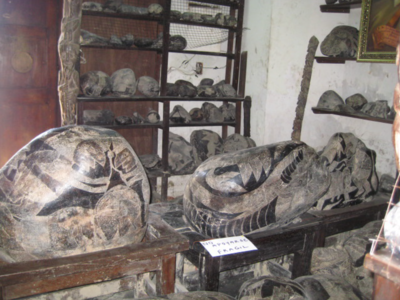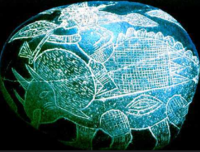Ica Stones
WIP
By Brian Kufel

The Ica Stones are a series of andesite stones supposedly dug up by Basilio Uschuya along with other farmers in the 1960s. The stones were then collected and popularized by Dr. Javier Cabrera. They originated in Ica Province, Peru, and depicted anachronistic drawings, most famously dinosaurs. They have been used to prove the co-existence of humans and dinosaurs to support claims to a young earth and the existence of modern humans for hundreds of millions of years and their guidance by aliens. These claims are made by young-earth creationists as well as ancient astronaut theorists. Uschuya has since admitted to manufacturing the stones, making them forgeries.
History

Major Proponents
Basilio Uschuya
Javier Cabrera
Erich Von Daniken
Pseudoarchaeological Narratives
The narratives around these stones changes depending on the overarching claims that a specific theorist is trying to make. Generally, these overarching claims can be split into two groups, Young Earth Creationists, and Ancient Astronaut Believers. The narratives of these two groups draw on the Ica stones as evidence but make dramatically different claims. The variance in conclusions does show that these stones by themselves do not necessarily prove a single interpretation, but if accepted as true, they do invalidate the work of Archaeology.
Ancient Astronauts
Young Earth Creationism
Archaeological Evaluation
References
- ↑ Sceptigirl (photographer), "IMG_1252", Ancient World Image Bank (New York: Institute for the Study of the Ancient World, 2009-) <https://www.flickr.com/photos/30443314@N02/2851796125/>, used under terms of a Creative Commons Attribution license.
- ↑ Camero, Christian (photographer), "ica_stone_lg", Ancient World Image Bank (New York: Institute for the Study of the Ancient World, 2009-) <https://www.flickr.com/photos/chcrai/8964821064/>, used under terms of a Creative Commons Attribution license.